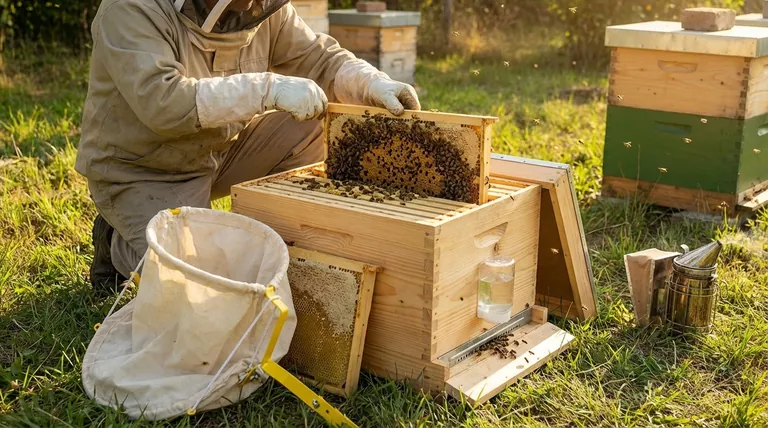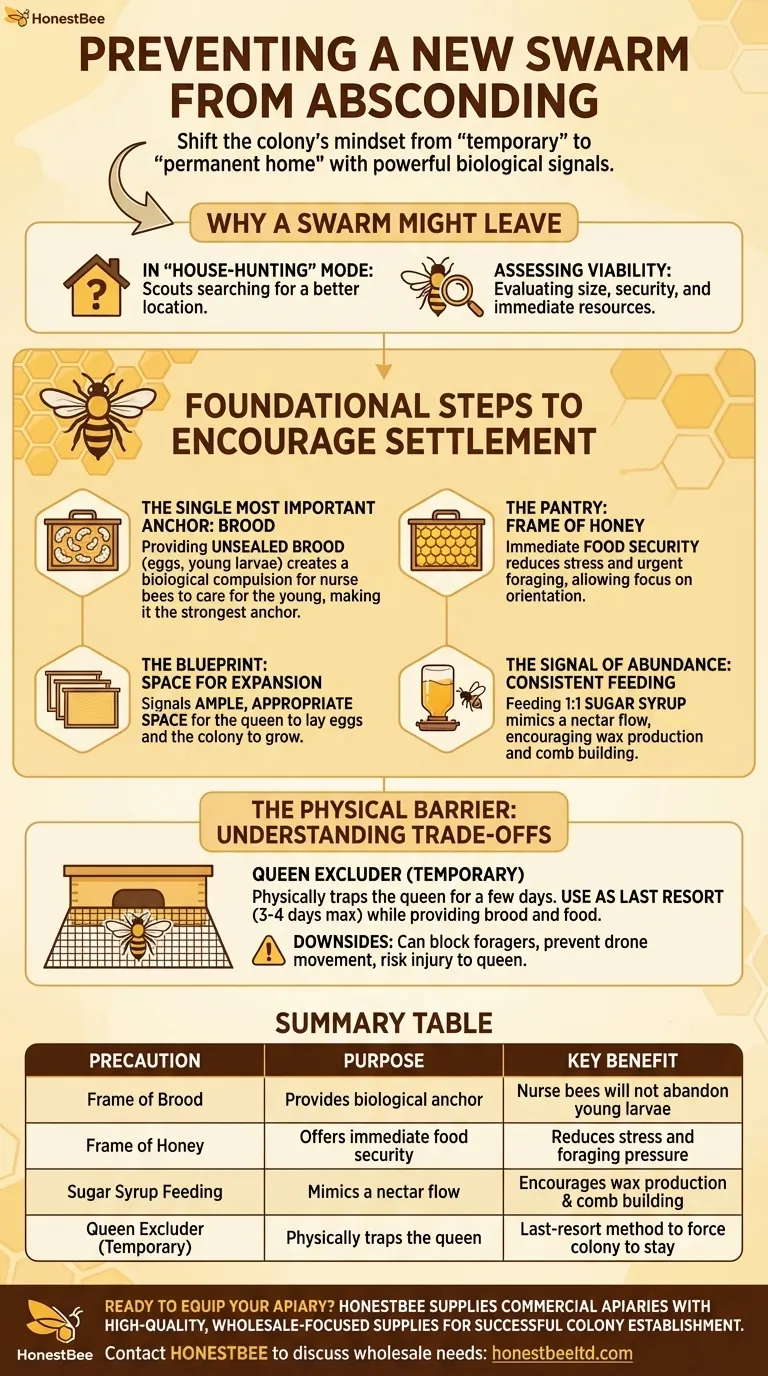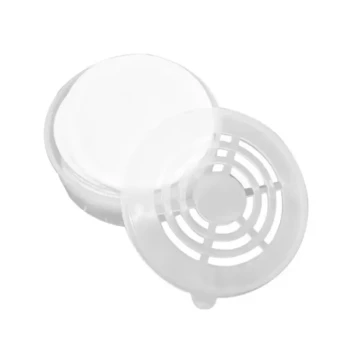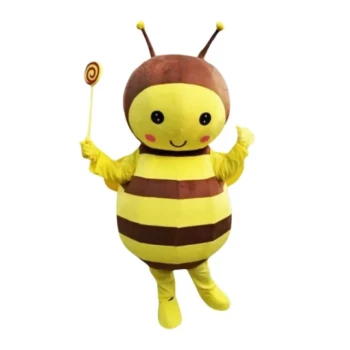To prevent a newly captured swarm from absconding, you must immediately convince the bees that their new hive is a permanent, resource-rich home. The most effective way to do this is by providing a frame containing both sealed and unsealed brood from another hive, a frame of honey, empty frames for building, and a consistent source of sugar syrup.
The core challenge is shifting a swarm's mindset from "temporary shelter" to "permanent home." A swarm will stay not because it is trapped, but because it has been given compelling biological reasons to invest in the location: young to care for, food in the pantry, and space to grow.

Why a New Swarm Might Leave
A swarm is a colony in transition. The bees have left their old home and are actively looking for the ideal new location. Your hive box is just one of many options they may have scouted.
They Are in "House-Hunting" Mode
A swarm is essentially homeless and on high alert. Scout bees have likely identified multiple potential nesting sites, and the colony will remain ready to move until they collectively agree that one location is superior.
Assessing a New Location's Viability
The bees perform a rapid assessment of any new cavity. They are evaluating its size, security, and immediate resource availability. If your hive box doesn't quickly prove its worth, they will abandon it for a better option.
Foundational Steps to Encourage Settlement
Your goal is to provide undeniable signals that this new hive is the perfect place to build their future. Each of the following steps sends a powerful biological message to the colony.
The Single Most Important Anchor: Brood
Providing a frame with unsealed brood (eggs and young larvae) is the strongest anchor you can use. The nurse bees in the swarm are biologically compelled to care for the young, immediately giving them a critical job they will not abandon.
The presence of brood pheromones tells the entire colony that this is an established, viable nest.
The Pantry: A Frame of Honey
A frame containing some honey and pollen provides immediate food security. This reduces the colony's stress and the urgent pressure to forage, allowing them to focus on orienting to their new home and beginning to build comb.
The Blueprint: Space for Expansion
Including one or two empty frames with foundation (or drawn comb if available) gives the bees an immediate project. It signals that there is ample, appropriate space for the queen to lay eggs and for the colony to expand.
The Signal of Abundance: Consistent Feeding
Feeding the swarm a 1:1 sugar syrup mimics a natural nectar flow. This encourages the bees to produce wax and begin building out new comb, reinforcing their commitment to the location. Continue feeding until they are well-established and building comb on their own.
The Physical Barrier: Understanding the Trade-offs
Some beekeepers use a more direct method to prevent the swarm from leaving, but it comes with significant drawbacks.
How a Queen Excluder Works
Placing a queen excluder over the entrance or under the bottom hive body for a few days physically traps the queen. Since a swarm will not willingly leave its queen, the colony is forced to stay.
The Potential Downsides and Risks
This is a forceful method, not a persuasive one. It can prevent drones from leaving or returning, block foragers carrying large loads of pollen, and potentially injure the queen if she attempts to escape. It should only be used as a temporary, last-resort measure for a few days while also providing the brood and food that truly convince the bees to stay.
How to Apply This to Your Swarm
Your approach should be based on providing overwhelming positive signals that the hive is a superior home.
- If your primary focus is the most reliable, bee-friendly method: A single frame of open brood is your most powerful tool and should be your top priority.
- If you do not have access to a frame of brood: Rely heavily on providing a frame of honey and consistent feeding to signal resource stability.
- If you must use a physical barrier: Use a queen excluder for no more than 3-4 days and remove it as soon as you see the bees bringing in pollen and building new comb.
Ultimately, you are creating an environment so appealing that the bees choose to stay on their own accord.
Summary Table:
| Precaution | Purpose | Key Benefit |
|---|---|---|
| Frame of Brood | Provides a biological anchor | Nurse bees will not abandon young larvae |
| Frame of Honey | Offers immediate food security | Reduces stress and foraging pressure |
| Sugar Syrup Feeding | Mimics a nectar flow | Encourages wax production and comb building |
| Queen Excluder (Temporary) | Physically traps the queen | Last-resort method to force the colony to stay |
Ready to properly equip your apiary for swarm management?
HONESTBEE supplies commercial apiaries and beekeeping equipment distributors with the high-quality, wholesale-focused supplies needed for successful colony establishment. From durable hive boxes and frames to efficient feeders, we provide the reliable equipment that supports the proven methods for preventing absconding.
Contact HONESTBEE today to discuss your wholesale needs and ensure your beekeeping operations are built on a solid foundation.
Visual Guide

Related Products
- HONESTBEE Professional Telescopic Pole Bee Swarm Catcher
- Professional Multi-Component Bucket Wasp Trap
- Plastic Beetle Blaster Trap Beekeeping Tools and Supplies
- Black Plastic Beetle Barn Hive Beetle Trap for Beehives
- Queen Bee Catcher Plastic Bee Marker Bottle with Piston Marking Tube
People Also Ask
- How can walk-away splits help in swarm prevention? A Proactive Strategy for Beekeepers
- Where is the best place to put a bee trap? Intercept Scout Bees for Maximum Swarm Capture
- How frequently should pollen be harvested from traps? Optimize Quality and Hive Health
- How do beekeepers catch bees? Master Swarm Capture for Apiary Success
- How should a captured swarm be placed into the hive equipment? A Guide to Secure Hiving



















